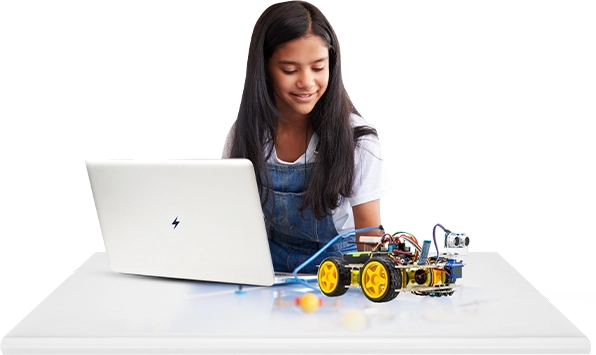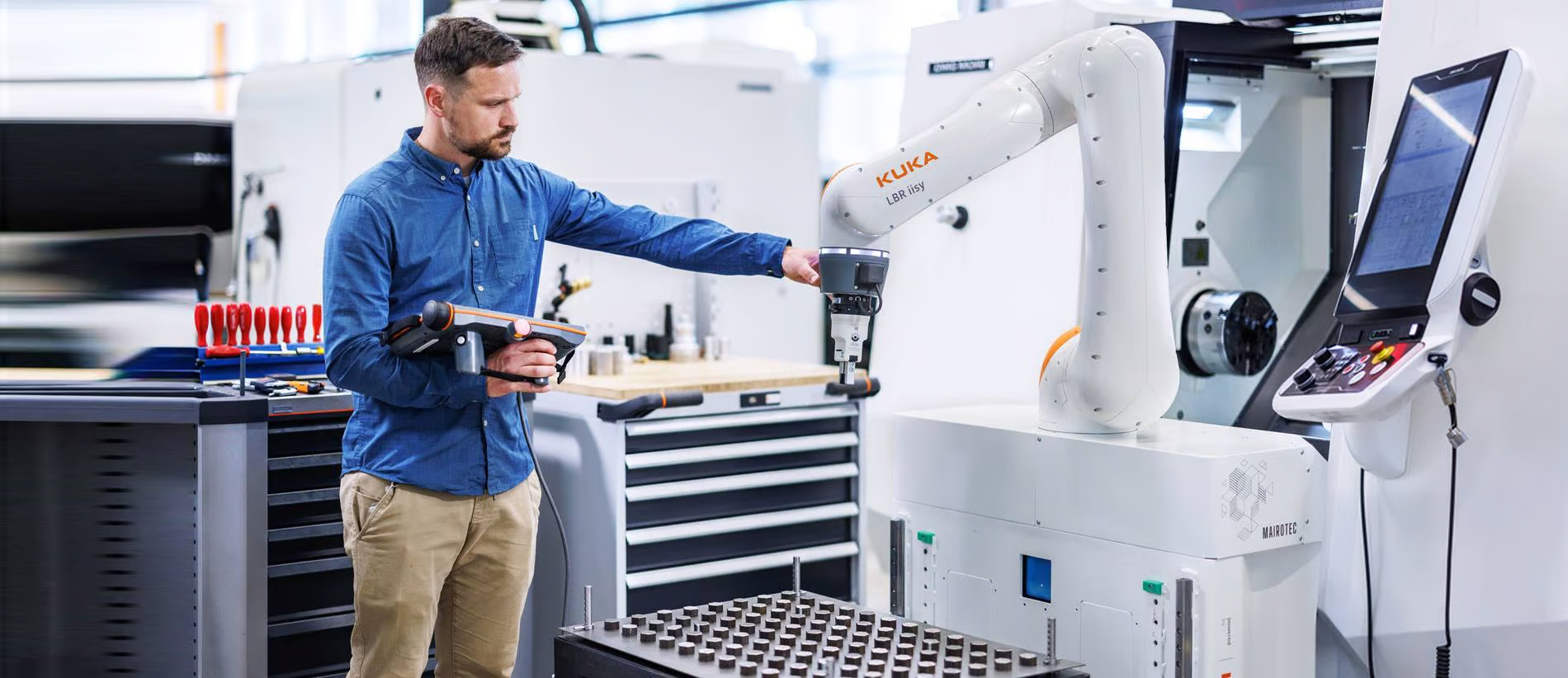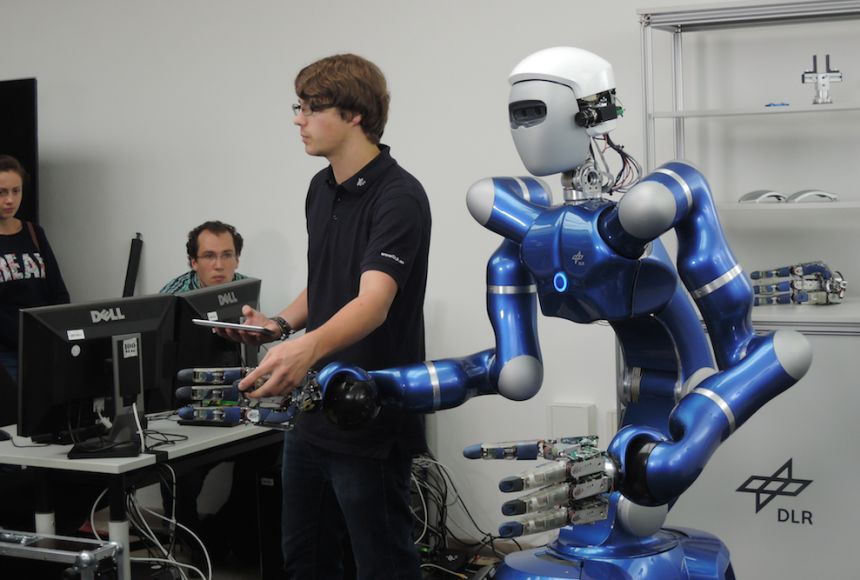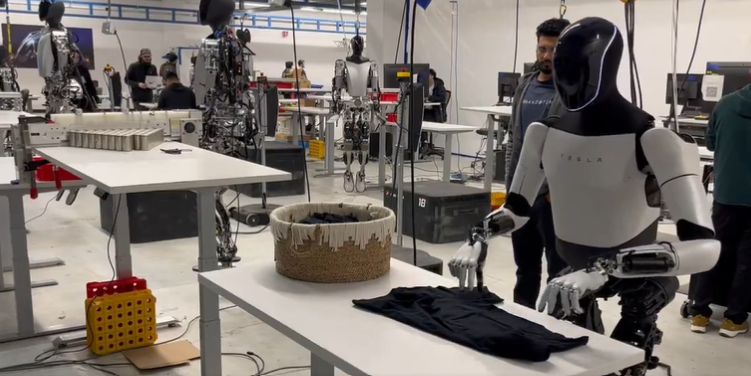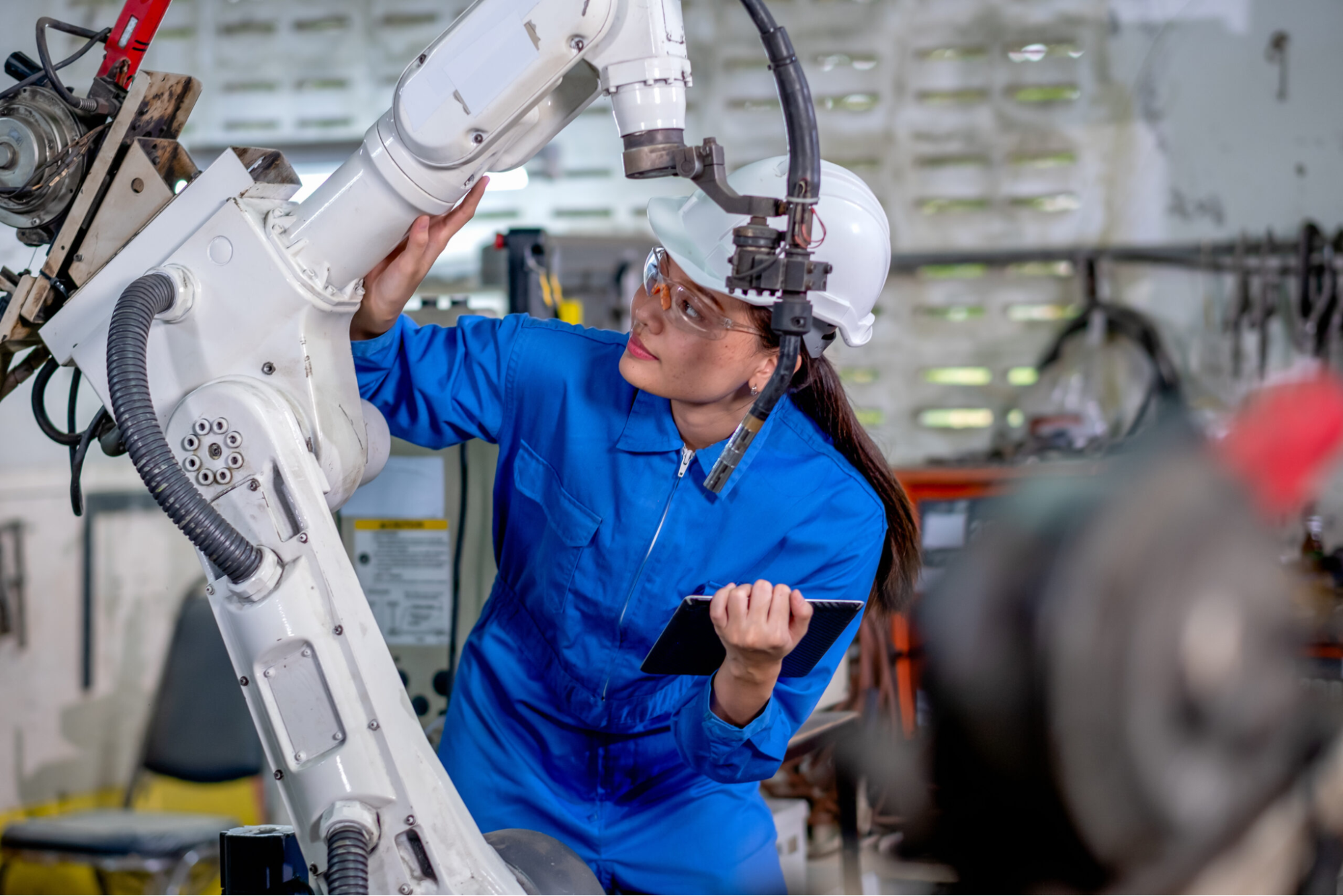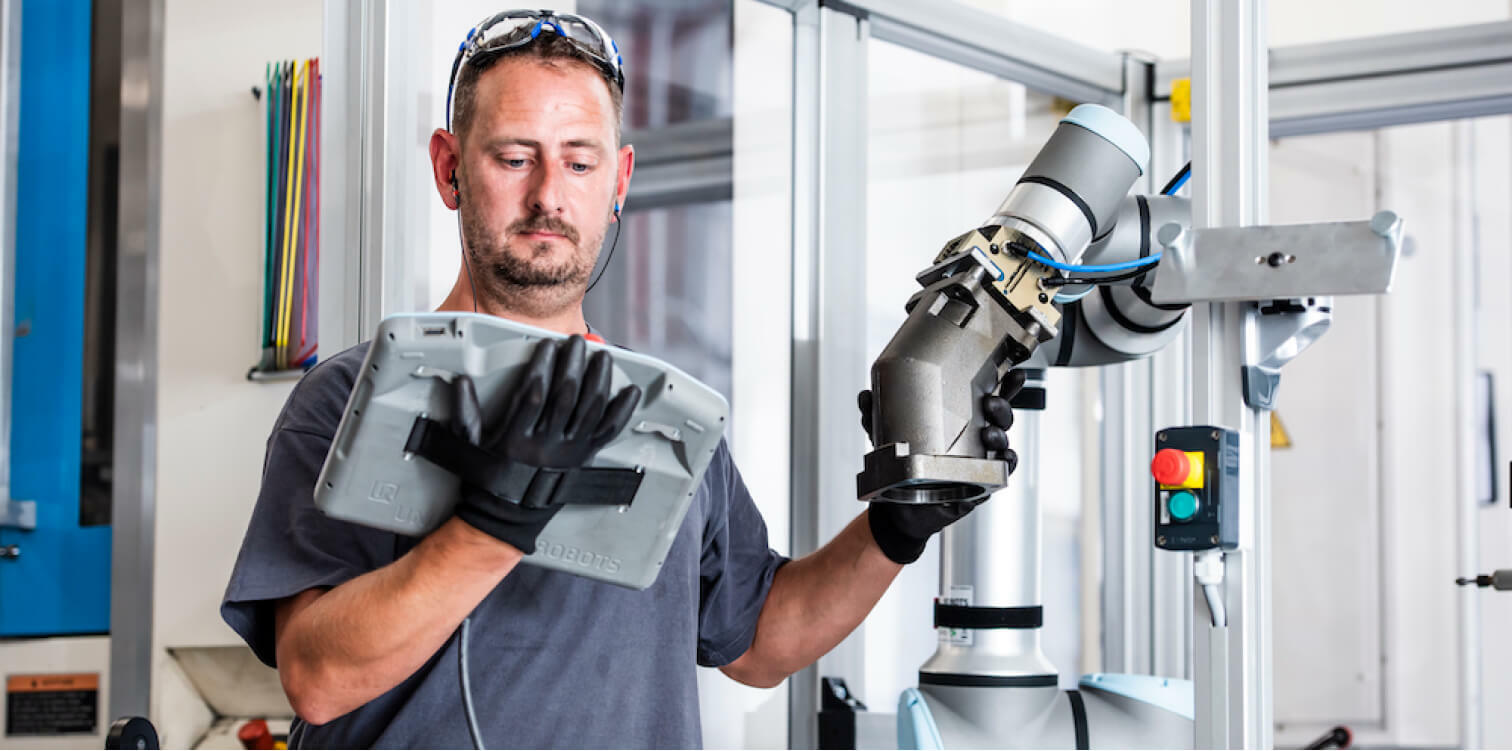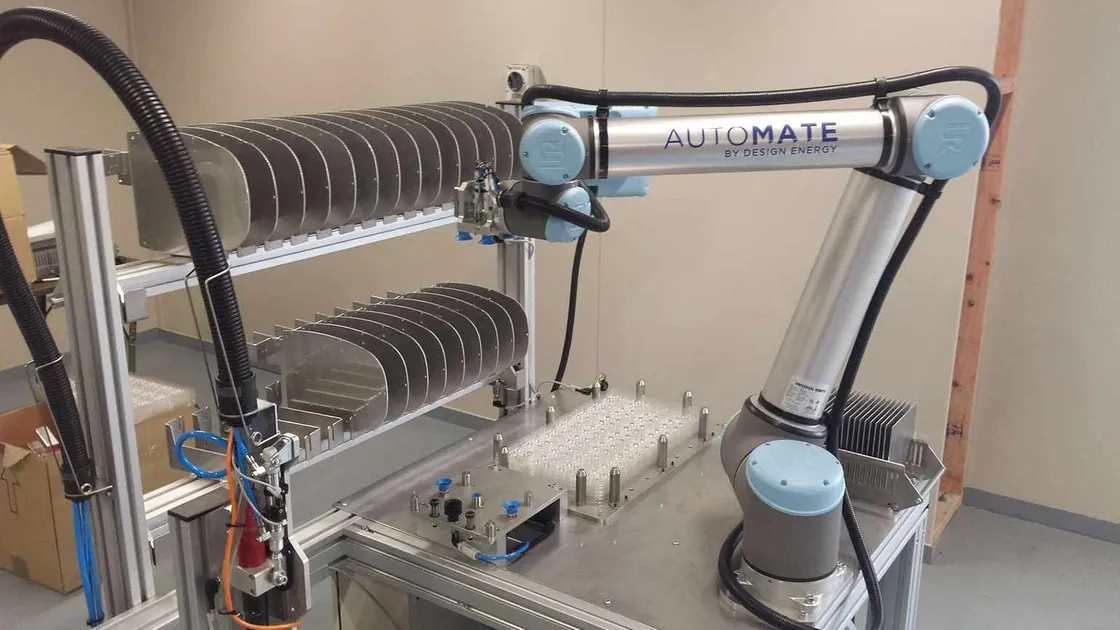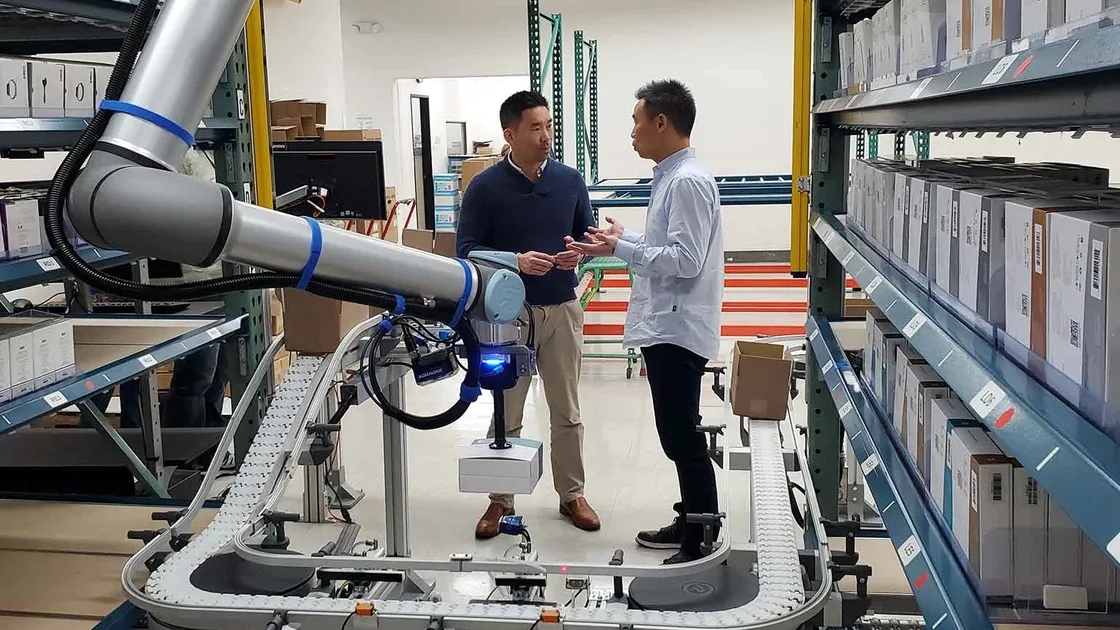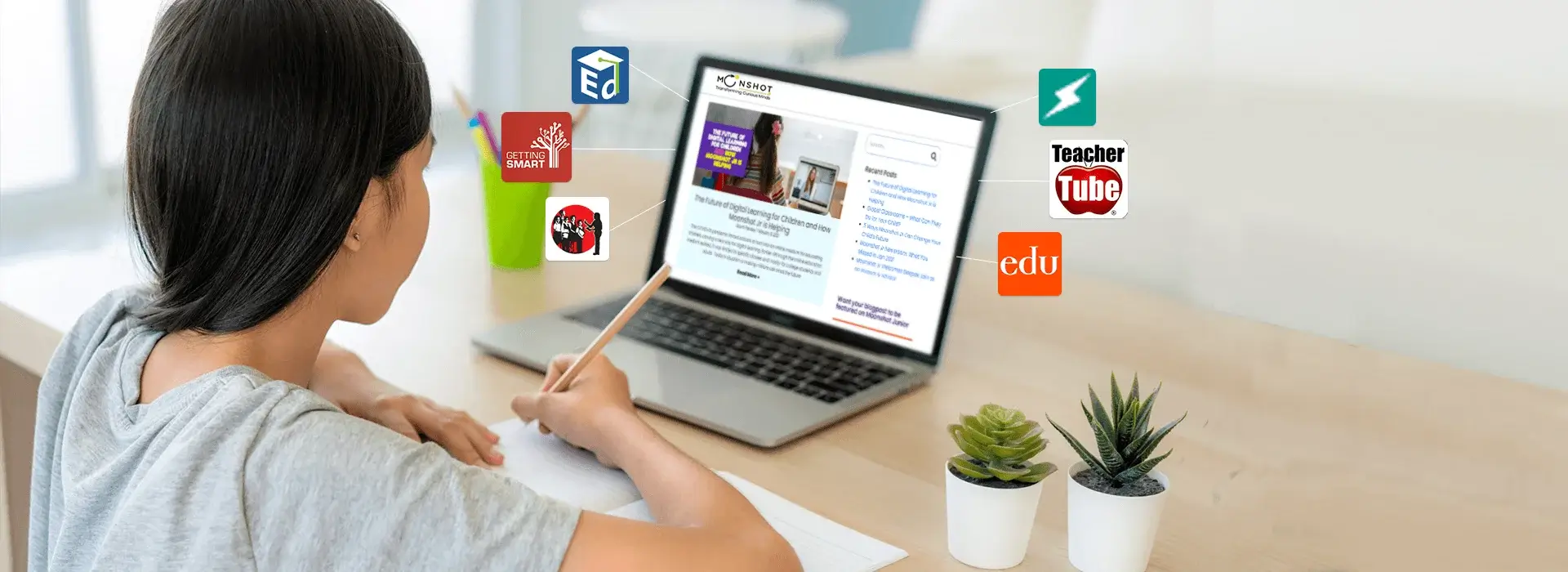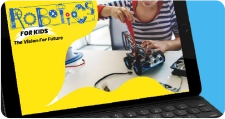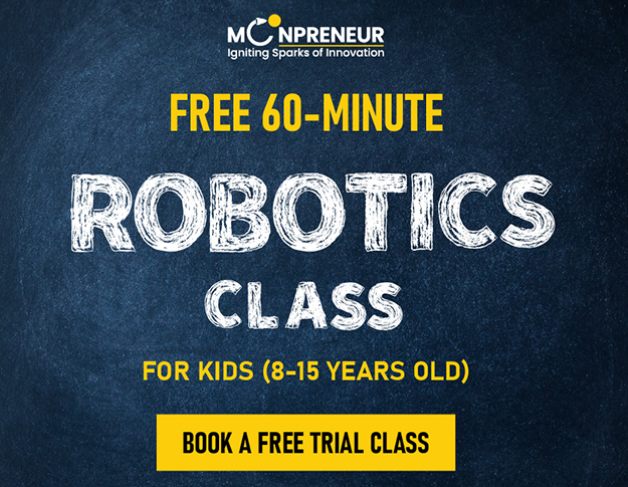
Update: This article was last updated on 23rd March 2024 to reflect the accuracy and up-to-date information on the page.
Are you intrigued by working with robots but concerned about their behavior and safety? Collaborative Robots or COBOTs work collaboratively with humans. To begin with, we must understand what a Collaborative robot is!
Brief intro about Collaborative Robots (COBOTS)
A collaborative robot, commonly known as a COBOT, is specifically engineered for industrial environments, enabling it to operate safely alongside humans in shared workspaces. Conversely, autonomous robots are programmed to perform specific tasks repeatedly, operate independently, and remain stationary.
Collaborative robots provide a practical, hands-on approach to learning robotics, enhancing student’s understanding of technology, teamwork, and problem-solving through direct interaction and cooperation.
Invented in 1996 by J. Edward Colgate and Michael Peshkin, professors at Northwestern University, COBOTs are designed to assist and enhance our capabilities while providing a seamless collaborative experience. They are cost-effective, safe, and remarkably flexible, making them an ideal choice for enhancing different aspects of our lives.
1. Robots are programmed and designed to help in technology
New technologies like mobile technology, AI, machine vision, cognitive computing, and touch technology are helping small robots, known as collaborative robots, to understand their surroundings better and do many different tasks safely near human workers. These robots are programmed to keep humans safe and can learn tasks quickly by watching and practicing.
2. Helps in manufacturing
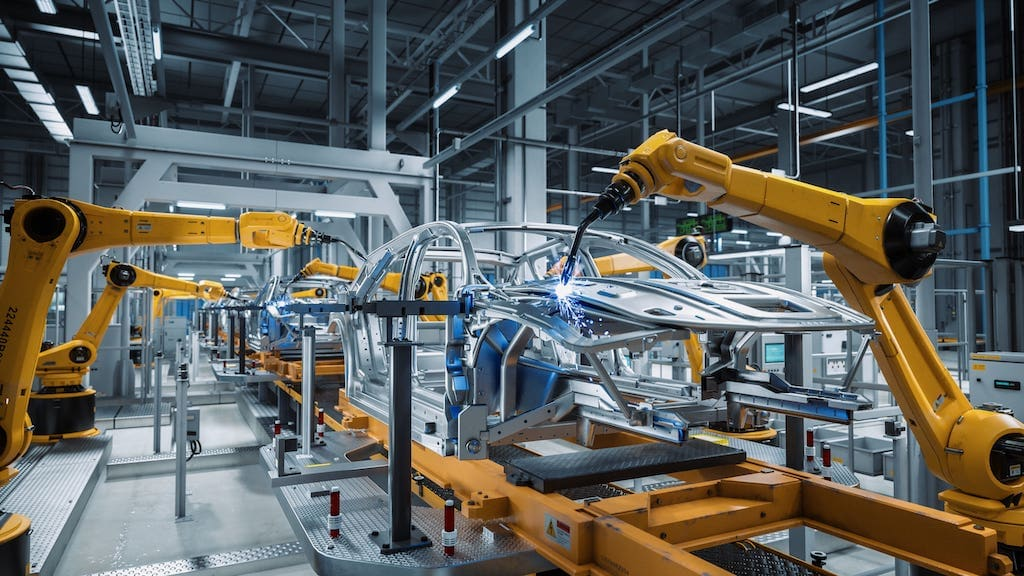 Collaborative Robots often do tasks in manufacturing, like putting things together, automating packaging, moving materials, helping with machines, and checking product quality.
Collaborative Robots often do tasks in manufacturing, like putting things together, automating packaging, moving materials, helping with machines, and checking product quality.
3. Helps save labor costs and time
COBOTS addresses the difficulty of hiring competent workers while lowering costs and increasing efficiency. Given the benefits, the market for collaborative robots is expanding. Analyst Maya Xiao says that the global market for these robots will increase by 20-30% every year from 2025 to 2026.
Recommended Reading: 3 Laws of Robotics
What ensures the safety of a collaborative robot (COBOT)?
Collaborative robots (COBOTS) revolutionize industrial robotics by working safely alongside human operators, unlike traditional robots that were confined to safety cages and pre-programmed tasks.
COBOTS come with software-controlled sensors detecting objects, people, and potential collisions, shutting down immediately upon detecting anomalies.
Utilizing power and force limitation (PFL) technology, collaborative robots identify abnormal forces during collisions, reducing accidents. Rounded edges further minimize collision risks with human workers.
Additional safety measures for kids incorporate cutting-edge technology such as camera vision, torque sensors, laser scanners, LED and audio feedback systems, and simplified machine learning algorithms for pattern recognition.
Collaborative robots not only enhances workplace safety but also offers flexibility, security, and adaptability in industrial settings.
Recommended Reading: EXPLAINING MACHINE LEARNING TO A KID
There are 4 distinct types of COBOTS as per ISO 10218, issued by the International Organization for Standardization (ISO):
- Monitoring speed and maintaining safe distance: These COBOTS utilize sensors to maintain a safe distance from human workers, boasting features akin to safety-rated monitored COBOTS. However, they integrate more advanced capabilities. Notably, a machine vision system monitors their warning and stop zones. Upon detecting motion near the warning zone, the COBOTS’ vision system reduces its speed to ensure safety. If someone enters the stop zone, the COBOTS halt its operations until the area is clear, then resumes its tasks.
- Monitored stop with safety rating: These robots use sensors to detect human presence and halt operations when a worker enters a designated zone, which can be resumed by pressing a button.They are suited for tasks needing minimal human intervention and incorporate multiple safety sensors to prevent proximity incidents with human coworkers.
- Manual guidance or hand-guided operation: These features allow operators to physically guide them in tasks. For instance, programmers can demonstrate task completion by guiding the COBOTS with their hands. This feature simplifies reprogramming without software changes, contributing to a short learning curve and minimizing downtime for these collaborative COBOTS.
- Limiting power and force: Crafted for injury prevention, these COBOTS limit their force output. They feature rounded edges and no sharp corners, facilitating safe human collaboration without extra safety measures like barriers or vision systems. With intelligent collision sensors, they halt upon contact with humans, prioritizing safety oversize, speed, and power compared to traditional robots.
Which way you can Program COBOTS
Programming a COBOT is much simpler and cost-effective compared to traditional robots, which often require specialized skills and expensive labor from robotics engineers. You can program them without a robotic integration company, reducing deployment costs significantly.
One of the easiest methods to program is through drag-and-drop programming. Users simply use drag-and-drop actions in the desired sequence to instruct the COBOT. Some collaborative robots also offer sketch-based programming, allowing users to sketch program layouts using intuitive buttons to guide the robot.
Additionally, COBOTS manufacturers provide application wizards to simplify complex operations, such as setting up end-of-line palletizing robots. This user-friendly programming approach enables more workers to interact with COBOTS effectively, facilitating autonomous installation, maintenance, and adaptation to new tasks as industrial processes evolve.
What is the price of a COBOT?
The cost of collaborative robots varies from manufacturer to manufacturer. Each manufacturer uses different features, and tools they use. Before using a COBOT in manufacturing, the organization should figure out if the benefits outweigh the cost.
The cost of a COBOT ranges between $10,000 to $50,000.
AI helps manufacturing with things like predicting maintenance, creating digital copies, and using COBOTS. Learn about the top 10 ways AI helps in manufacturing.
Application Of Collaborative Robots
COBOTS are employed across a wide range of applications and industries globally. Here are the four most prevalent uses of COBOTS:
1. Machine Tending: COBOTS are integral to machine-tending operations, including tasks such as computer numerical control (CNC), injection molding, and in-circuit testing, which involves individual component damage checks.
2. Assembly: COBOTS are utilized for precise and repetitive assembly tasks like screw driving, part fitting, and insertion.
3. Dispensing: Leveraging torque sensing capabilities, COBOTS excel in dispensing tasks such as gluing, sealing, and painting, leading to reduced waste and improved dispensing accuracy.
4. Finishing: Equipped with force control that adapts to the required force, COBOTS ensure consistent polishing, sanding, and buffing of materials.
Industrial Usage of COBOTS
They are commonly found in these industries:
- Scientific research
- Supply chain management
- Healthcare
- Packaging and co-packaging
- Automotive
- Electronics
- Metal fabrication
- Pharmaceuticals
- Furniture and Equipment
- General Manufacturing
- Plastics
- Food and Agriculture
FANUC, Yaskawa Electric Corp., Universal Robots, KUKA, Rethink Robotics, and Techman Robot are some of the top players who manufacture COBOTS.
Advantages of COBOTS:
1) Cost Efficiency: COBOTS optimize production processes, ultimately reducing production costs.
2) Precision: COBOTS maintain consistent force, ensuring accurate, high-quality production.
3) Adaptability: Easily re-programmable, they swiftly tackle new tasks, enhancing flexibility and reducing downtime.
4) Safety: By handling perilous tasks like welding or heavy lifting, cobots ensure human worker safety.
5) Productivity: By tackling repetitive tasks efficiently, COBOTS boost overall productivity.
Disadvantages of COBOTS:
1. Reduced payload: COBOTS typically handle payloads of 6 to 22 pounds, with some models capable of up to 78 pounds.
2. Need Human assistance: While they offer around-the-clock operation, human supervision is still necessary.
3. Limited operational velocity: Unlike industrial robots, COBOTS prioritize safety over speed, moving at 250 millimeters per second—four times slower than traditional robots.
4. Safety approvals: Obtaining safety clearances for COBOTS, especially in the EU, can be complex and costly, involving additional certifications for task changes or tool modifications.
Unlike traditional robots that require strict separation from human workers, Collaborative Robots are built to interact directly with people safely and cooperatively.
COBOTs are equipped with advanced robot sensor technologies that allow them to perceive their surroundings, and detect the presence of humans and work nearby without causing harm.
Conclusion
Regarding getting involved with COBOTs, there are various exciting opportunities for kids to explore and engage with Collaborative Robots.
By engaging in these activities, kids can develop a deep understanding of robotics, automation, and the collaborative capabilities of COBOTs. They will gain practical skills in programming, problem-solving, and teamwork which are crucial for their future roles as innovators and problem-solvers. Most importantly, they will foster a passion for working alongside robots as trusted companions and assistants.
Moonpreneur is dedicated to preparing your child for success in college and the evolving world of AI. To kickstart your child’s journey in robotics, sign up for a free 60-minute workshop today!



